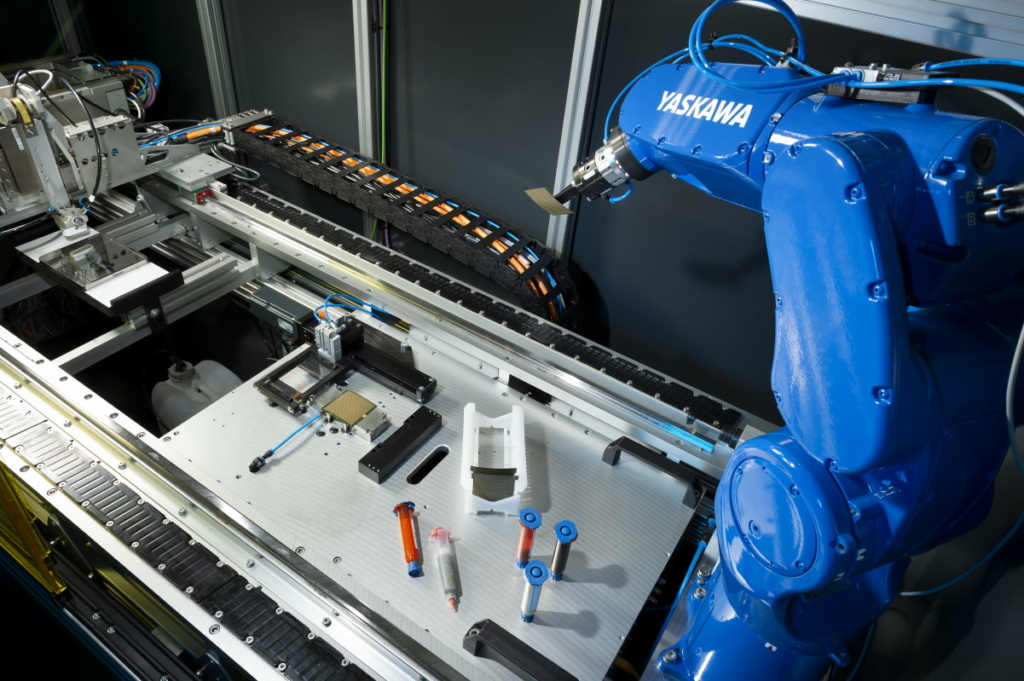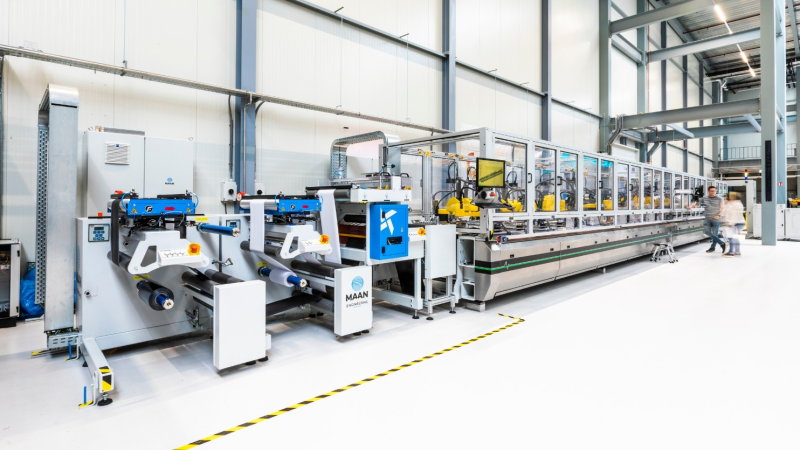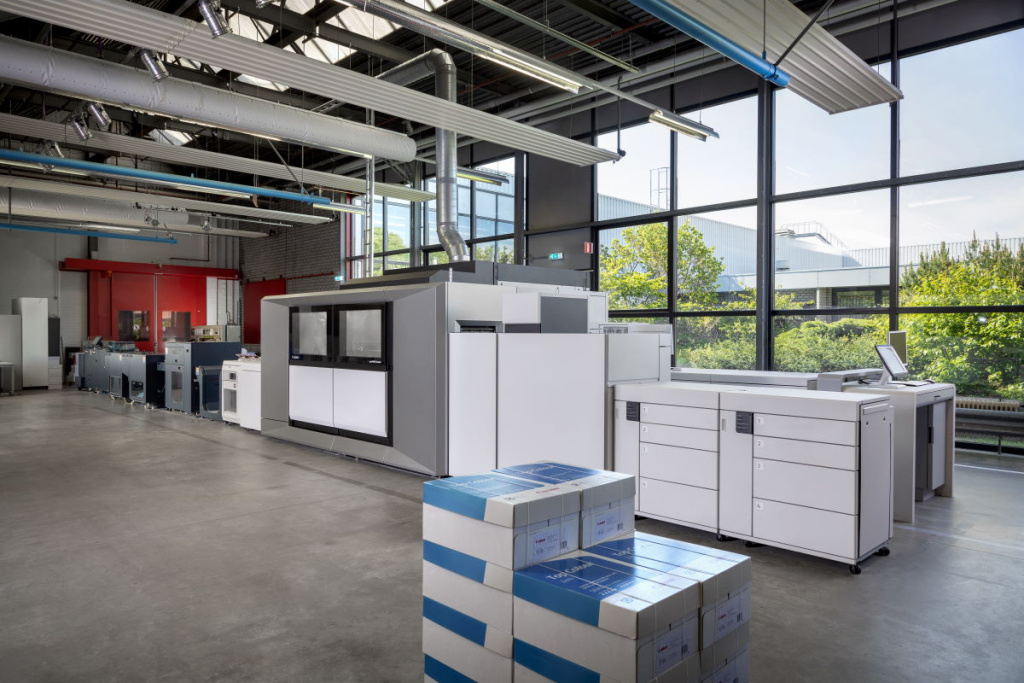A new printing technique developed at TNO’s Holst Centre could be a godsend for chip and electronics assembly and display manufacturing.
Once the paste is smeared in the grooves of the plate, a short but violent pulse of current is sent through electrical wires within. Like in a toaster, the wires produce heat, but that’s where the comparison ends. So violent is the surge of current that, for a fraction of a second, the heat flux becomes over ten times bigger than on the surface of the sun. Almost instantaneously, a bit of solvent at the interface of the paste and plate evaporates. Pressure builds up at lightning speed, resulting in an explosion that blasts the paste from the plate – the acceleration is over a million g. A moment later, the ‘ink’ lands on the substrate, in exactly the same pattern defined by the grooves.
This is how impulse printing works, an invention of TNO researchers at Holst Centre in Eindhoven. Like lithography, this new technique can transfer fine-grained patterns in the micro to millimeter range, but its price tag and throughput are similar to conventional printing methods. Moreover, impulse printing can handle complex 3D structures on the substrate just fine – the paste conforms to surface topology and can even bridge gaps.



